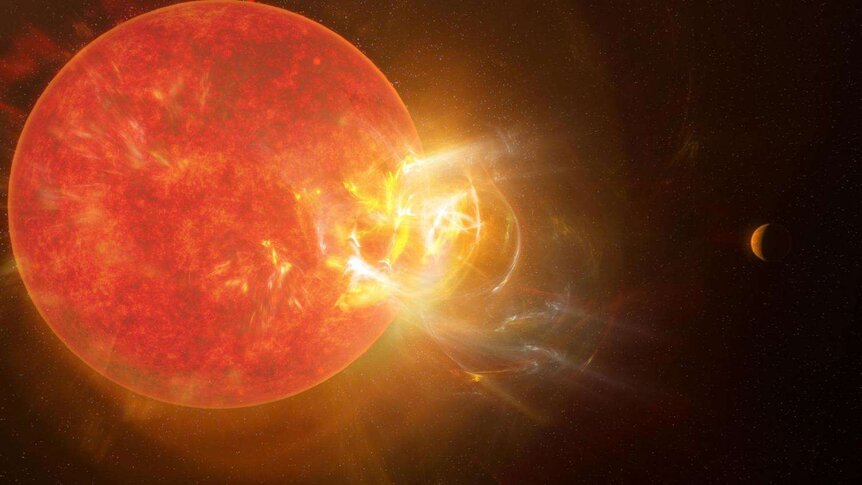Create a free profile to get unlimited access to exclusive videos, sweepstakes, and more!
Sunscreen anyone? Proxima Centauri just spit out its biggest solar flare ever

In an eruption of amazing magnitude, the volatile star Proxima Centauri (our Sun's closest neighbor) has just belched out its biggest solar flare ever recorded and the implications may mean that if alien life existed on its pair of orbiting planets, it would look very different from Earth's.
Led by a team of researchers at CU Boulder in Colorado, a study of the fantastic flare was published this week in the online journal, The Astrophysical Journal Letters. Officially categorized as a Red Dwarf, Proxima Centauri is about one-eighth the mass of our own star and lies four light-years away.
In a new press release, university astrophysicist Meredith MacGregor indicated that Proxima Centauri might be a small, dim star but don't let its diminutive size and feeble radiance fool you. Existing 20 trillion miles beyond our own sun, it's home to at least two planets, Proxima Centauri a and Proxima Centauri b.
MacGregor is an assistant professor at the Center for Astrophysics and Space Astronomy (CASA) and Department of Astrophysical and Planetary Sciences (APS) at CU Boulder in Colorado.
She and her team watched Proxima Centauri for roughly 40 hours using an array of nine ground telescopes and one orbital observatory. During the study, Proxima Centauri shot out an intense radiation plume that instantly elevated it to one of the largest ever observed in the Milky Way.
“The star went from normal to 14,000 times brighter when seen in ultraviolet wavelengths over the span of a few seconds,” said MacGregor. “If there was life on the planet nearest to Proxima Centauri, it would have to look very different than anything on Earth. A human being on this planet would have a bad time.”
Proxima Centauri has been in the crosshairs of astronomers for decades as a potential spot for alien life outside our own planetary neighborhood. One of its exoplanets, Proxima Centauri b, is Earth-like and exists in a “habitable zone” whose temperature range might be conducive to the formation of liquid water.
“A lot of the exoplanets that we’ve found so far are around these types of stars,” she explained. “But the catch is that they’re way more active than our sun. They flare much more frequently and intensely.”
To record this rare event, MacGregor and her crew aimed their astronomical devices at Proxima Centauri for a total of 40 hours over several months back in 2019. The instruments included the Hubble Space Telescope, the Atacama Large Millimeter Array (ALMA), and NASA’s Transiting Exoplanet Survey Satellite (TESS). Five of the nine were fortunate enough to capture the incredible flare and its accompanying broad spectrum of radiation.
“It’s the first time we’ve ever had this kind of multi-wavelength coverage of a stellar flare,” noted MacGregor. “Usually, you’re lucky if you can get two instruments.”
By using this layered process, the CU Boulder team was able to capture one of the most detailed solar flares ever obtained in the Milky Way. The record-setting, 7-second occurrence was seen on May 1, 2019. It did not generate a significant level of visible light, but was instead characterized by waves of both ultraviolet and radio, also called “millimeter” radiation.
“In the past, we didn’t know that stars could flare in the millimeter range, so this is the first time we have gone looking for millimeter flares,” she said.
The star's observed flare was nearly 100 times stronger than any similar flare witnessed from Earth’s sun. This type of energy can ravage a planet’s atmosphere and potentially blanket life forms with lethal deadly radiation.
“Proxima Centauri’s planets are getting hit by something like this not once in a century, but at least once a day if not several times a day," MacGregor concluded. “There will probably be even more weird types of flares that demonstrate different types of physics that we haven’t thought about before.”




























